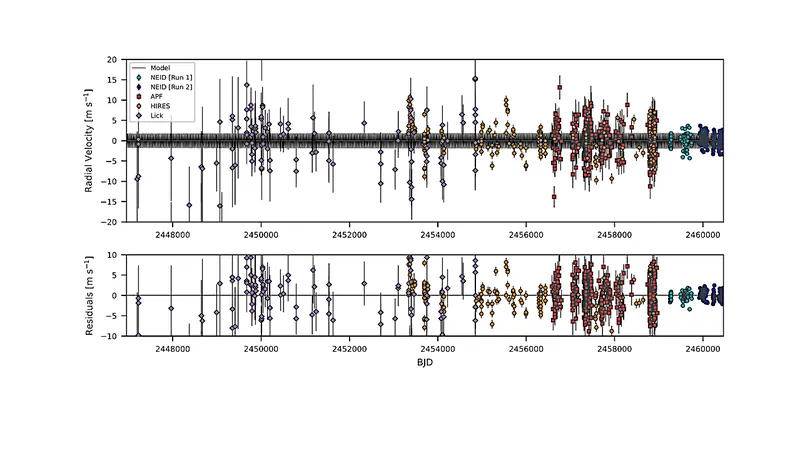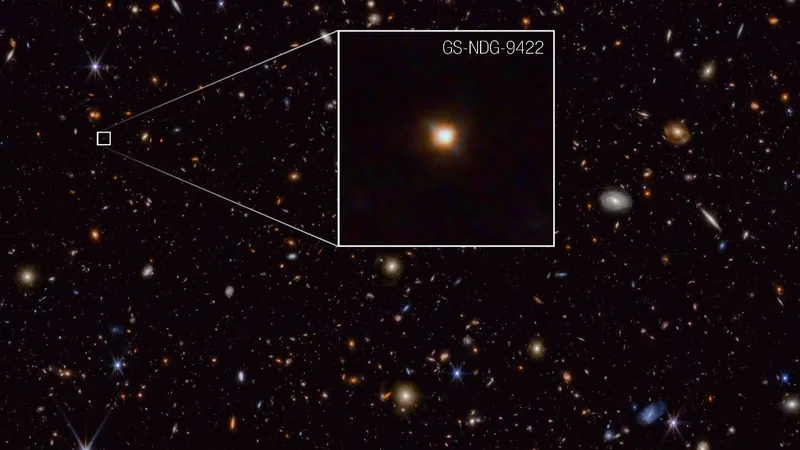
Breakthrough Discovery: NEID Earth Twin Survey Confirms New Exoplanet HD 86728 b!
2024-09-20
Introduction
In an exciting development in the field of astronomy, the NEID Earth Twin Survey (NETS) has made significant strides in its quest to explore our cosmic neighborhood. After almost three years of meticulous observations, researchers have confirmed the first exoplanet discovered through this ambitious survey: HD 86728 b, a planet with a minimum mass of approximately 9.16 Earth masses located on a perfectly circular orbit with a period of 31.15 days.
Significance of Discovery
This groundbreaking discovery not only validates a previous candidate signal identified by Hirsch et al. in 2021 but also highlights the ongoing precision of the NEID's radial velocity (RV) measurements, which are crucial for detecting exoplanets. The confirmation of HD 86728 b was made possible through a careful analysis of the stellar RVs and various spectral activity indicators. The detected signal exhibits a semi-amplitude of just 1.91 m/s, indicating that the host star exhibits minimal noise, primarily due to short-term granulation activity.
Uniqueness of HD 86728 b
What sets HD 86728 b apart from other exoplanets? Remarkably, it belongs to the small group of planets that not only share similar masses and orbital periods but also lack known planetary siblings in their respective systems. This unique characteristic presents an intriguing opportunity for researchers to study the formation and evolution of such isolated exoplanets.
Context of the Discovery
To better understand the context of this discovery, it is crucial to examine the broader landscape of exoplanets found in FGK dwarf systems. Within this category, a variety of exoplanets are identified, with some having well-defined masses (such as transiting planets) while others remain uncertain due to inclination-related challenges. HD 86728 b's classification emphasizes its rarity, as it resides in the designated mass-period region without any known companions, making it a potential candidate for in-depth investigation.
Future Prospects
The NEID Earth Twin Survey represents a significant leap forward in our understanding of exoplanets, and as scientists continue to analyze the data, more exciting revelations are likely on the horizon. This discovery not only opens new avenues for exploration but beckons questions about the conditions for habitable worlds around stars similar to our Sun. Could there be more hidden gems lurking among the stars, waiting for confirmation? Stay tuned as we keep you updated on the latest astronomical breakthroughs!


 Brasil (PT)
Brasil (PT)
 Canada (EN)
Canada (EN)
 Chile (ES)
Chile (ES)
 España (ES)
España (ES)
 France (FR)
France (FR)
 Hong Kong (EN)
Hong Kong (EN)
 Italia (IT)
Italia (IT)
 日本 (JA)
日本 (JA)
 Magyarország (HU)
Magyarország (HU)
 Norge (NO)
Norge (NO)
 Polska (PL)
Polska (PL)
 Schweiz (DE)
Schweiz (DE)
 Singapore (EN)
Singapore (EN)
 Sverige (SV)
Sverige (SV)
 Suomi (FI)
Suomi (FI)
 Türkiye (TR)
Türkiye (TR)